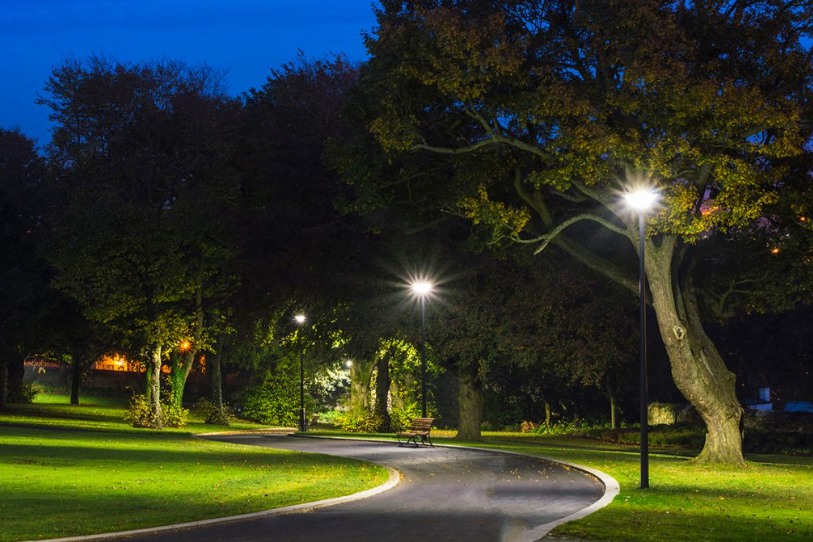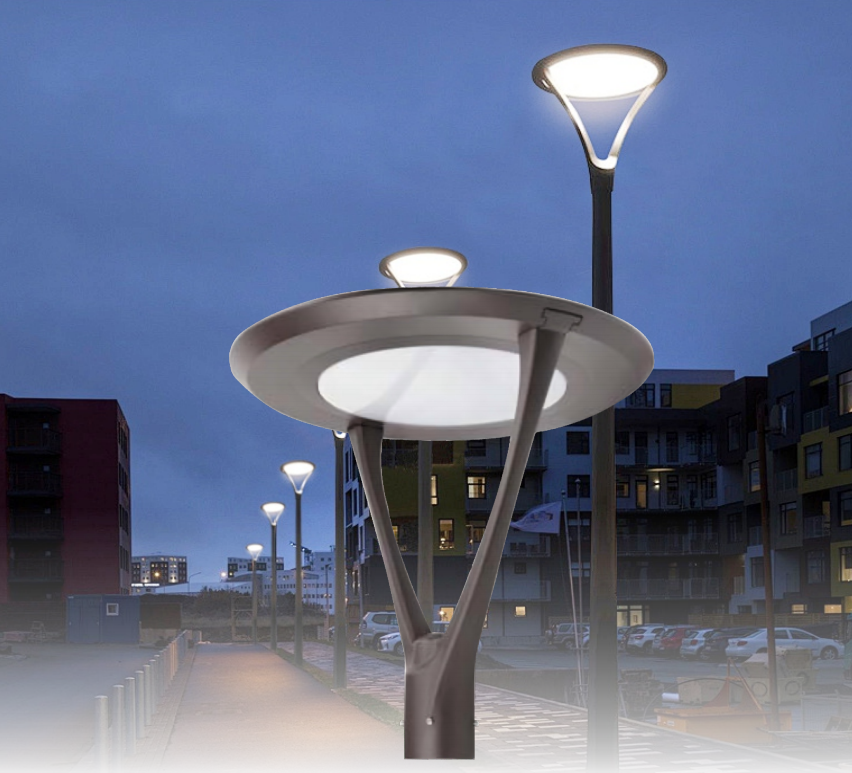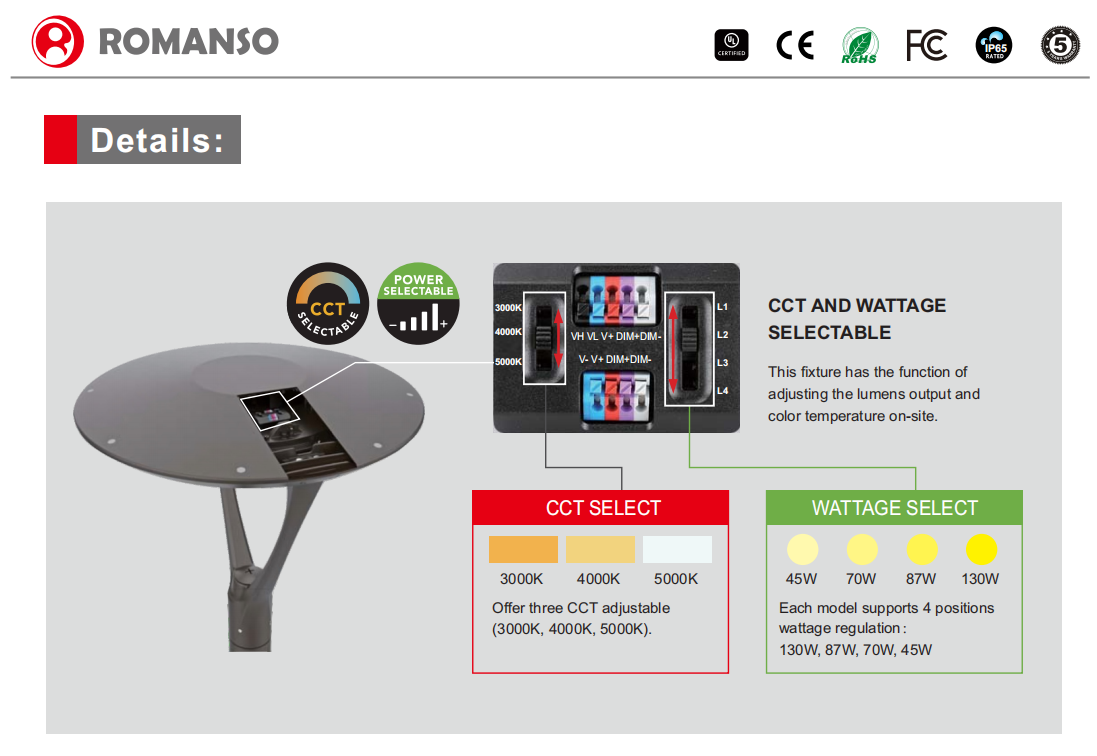Home >> News >> Industry News
A post top light is an area or street light that provides human scale illumination of streetscape, pedestrian walkways, bikeways, residential areas, public parks, college campuses, squares, parking lots, plazas, etc. The addition of human scale illumination can promote the safe use of streets and outdoor areas at night for vehicles, bicycles, and pedestrians. The presence of lighting also provides a senses of security and reduces the likelihood of crime.
Outdoor lighting not only transforms the environment but can also breathe new personality into the space. Post top lighting is appealing to architects and urban designers because of the architectural or decorative look delivered by poles and luminaires of the light fixtures. With its distinctive design language, post top lighting lends an aesthetic touch to the environment it serves. It can help a residential community develop its own sense of character, reinforce the landscape theme of an urban boulevard, enhance the atmosphere in commercial areas, and maintain visual characters of a historic district.

Crucial to outdoor lighting in residential and commercial areas is the unison of form and function. Post top lighting is designed to fulfill aesthetic and functional applications simultaneously. It often draws on historical influences to express and underline the desired character. The timeless look of traditional post top lights is exuded by their iconic shapes that come in many different iterations. Post top lighting presents itself in an easily recognizable form in that the luminaire perches on the pole.
The most differentiable part of a post top light is its luminaire. Acorns and lanterns are classic shapes with staying power. The aesthetic value of traditional design is arguably best represented by the acorn style which can be defined by the myriad options ranging from the classic apple shape to the inverted namesake acorn shape. The aesthetic of an acorn style post top light is primary derived from the glass, acrylic or polycarbonate globe. Textured or prismatic surface treatments are molded in to reduce glare, increase optical performance, and enhance the daytime appearance. Lantern style luminaires which can trace their roots all the way back to gas applications are timeless in their design elegance. The lantern family is exceptionally versatile. The luminaire may come with a four-, six- or eight-sided cast aluminum frame. The classic round style classified as Victorian is also a representative form factor of this family. The versatile selection has an array of finial options, window panel designs and roof configurations.
The technological migration from compact fluorescent, high intensity discharge (HID) and incandescent to solid state lighting breathes new life into the design of post top luminaires. While traditional forms remain popular thanks to the availability of retrofit LED lamps and LED upgrade kits, more modern and contemporary designs that exploit the directional nature and miniature size of LEDs are gaining favor. Luminaire designers no longer need to struggle with controlling and modifying the omni-directional light output from the bulky glass light bulbs. LED technology affords them the chance to create luminaires with a striking mix of geometric, sculptural and artistic excellence through a systems approach.
LED post top lights can be designed to blend into the environment for seamless architectural integration or a sense of wholeness or harmony in the landscape. They can also serve as decorative pieces to make a dramatic statement with an ornamental look. Time, technology and trends can blur the boundary between design styles. The popularity of acorns and lanterns is set to continue with their enduring appeal and the stylistic evolution driven by solid state lighting. Notable for simplicity, clean lines, intentional symmetry, and absence of fuss or ornateness of traditional styling, the modern design style facilitates the integration, infusion and organization of lighting into a coordinated system. The trend-forward contemporary design which breaks the rules and creates artistic wonders is a growing, fresh trend in outdoor lighting design.

Regardless of whether the application calls for a charming vintage vibe, a transitional equilibrium, a refined modern look, or a contemporary sophistication, scaling and coordination are critical to the aesthetic perfection of post top lighting. At the fixture level, the configuration of pole assembly should be balanced in scale, the dimension of the luminaire should be in scale with that of the pole base, and the style of the pole assembly should be coordinated with that of the luminaire.
A pole that is 4” square or round is typically designed for pole heights between 10’ and 13′. The 5” pole should be 14’ to 16’in height. Poles with diameters and square dimensions of 6” should be used with pole heights that are 17’ and taller. A traditional style pole base should correspond to the luminaire in width and volume. Its height should be no less than 10% and no greater than 25% of the total pole height. Fluted poles and bases generally complement traditional styling. Smooth shaft poles and bases work very well with modern and contemporary fixtures. [Source: Sternberg lighting].
At the application level, the style of post top lights should be coordinated with the street furniture and landscape. Luminaire mounting heights for urban or human scale illumination typically range from 3 m to 9 m. While the mounting height and the scale of the lighting fixture are mainly dictated by illuminance requirements, they should also respond to the environment, nearby buildings and other features.

The capability of a post top light to perform reliably in the most extreme environmental conditions is equally important as thermal and electrical engineering. LEDs and other electronics must be sealed against corrosion, and mechanical and electrical abnormalities that are caused by the ingress of dust and moisture. The housing, frame, fitter, and finial of a post top luminaire are generally constructed from die cast aluminum. Poles are often manufactured from aluminum or steel. The metal surface of these components must be protected against corrosion and other forms of deterioration.
The corrosion control process involves surface treatment of a metal with a prescribed chemical to form a protective film which create a barrier between the corrosive environment and the metal surface. Chemical conversion treatment results in the best possible adhesion of the polyester powder coating. Polyester powder coating can mask initial stages of corrosion and create the desired color for the light fixture. The powdercoat is baked at high temperatures for a durable finish and is formulated to be highly resistant to ultraviolet degradation.